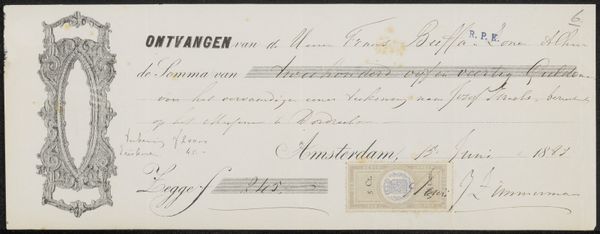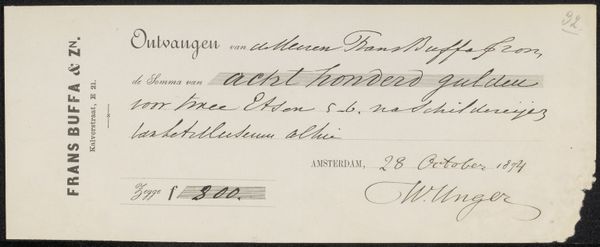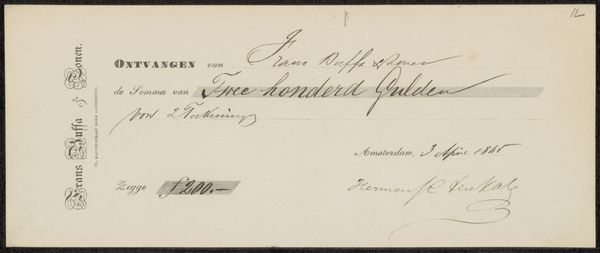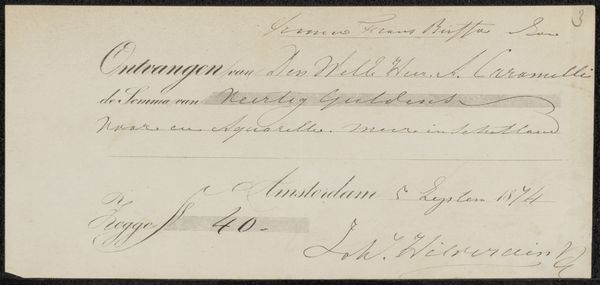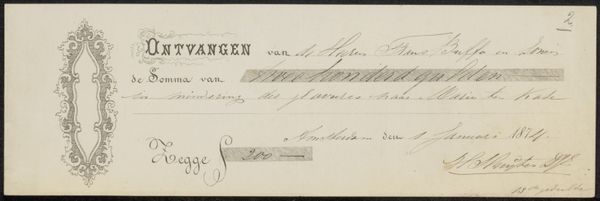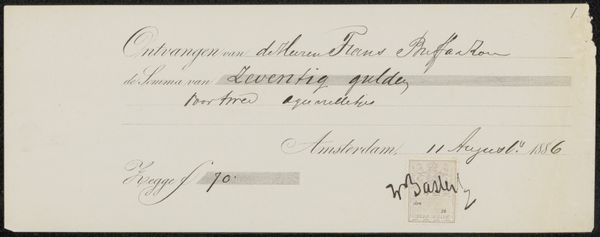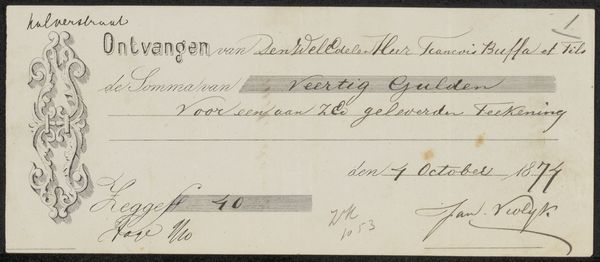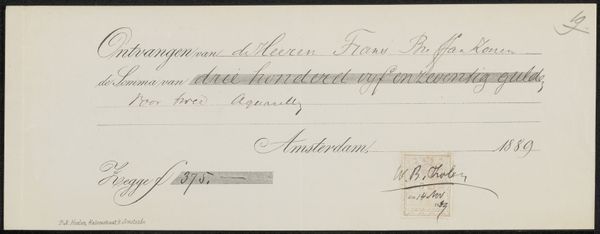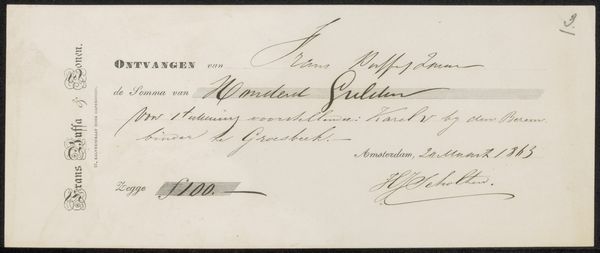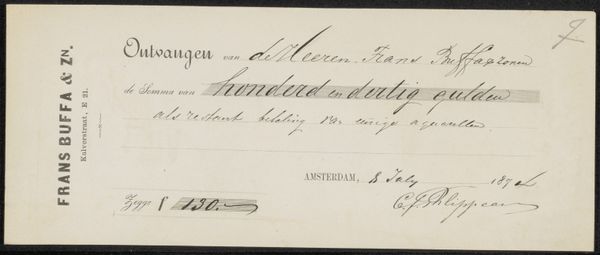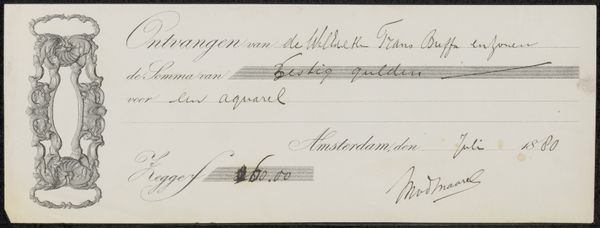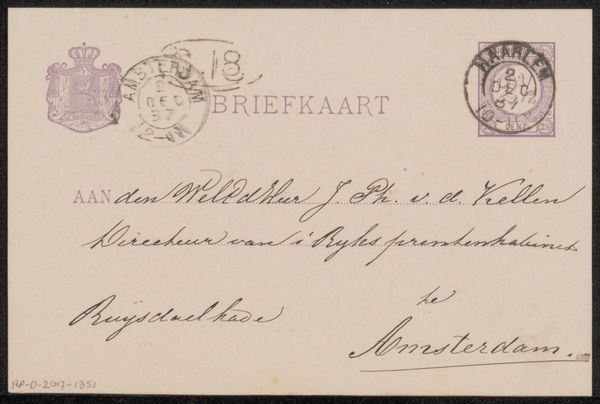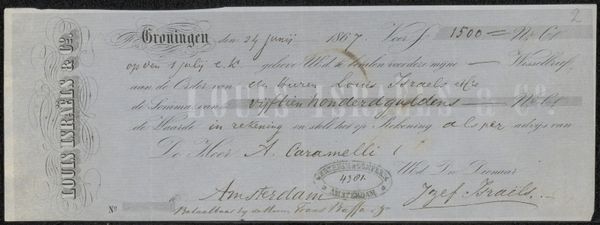
drawing, print, paper, ink
#
portrait
#
drawing
#
hand-lettering
#
dutch-golden-age
# print
#
hand drawn type
#
hand lettering
#
paper
#
personal sketchbook
#
ink
#
hand-drawn typeface
#
ink drawing experimentation
#
pen-ink sketch
#
pen work
#
sketchbook drawing
#
sketchbook art
#
calligraphy
Copyright: Rijks Museum: Open Domain
This is a receipt made in 1886 in Amsterdam by Frans Buffa en Zonen. It documents a transaction. The receipt is a powerful symbol of commerce and exchange. The practice of recording transactions is ancient. In Mesopotamia, cuneiform tablets served as receipts, marking the beginning of written language's association with trade. Here, we see its evolution. The handwritten script, adorned with flourishes, connects to the tradition of illuminated manuscripts. It hints at a time when even mundane documents possessed an artistic quality. Consider the psychological weight of receipts. They embody trust and accountability, yet also hint at the anxieties surrounding economic stability. These slips of paper serve as tangible reminders of both our desires and obligations. Observe how simple acts of documenting exchange reflect a continuing human need to track, control, and memorialize our interactions with the material world. From clay tablets to digital records, we find the enduring power of the symbol.
Comments
No comments
Be the first to comment and join the conversation on the ultimate creative platform.
